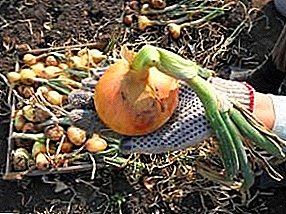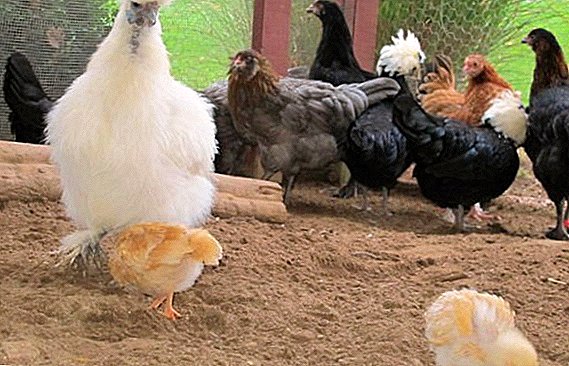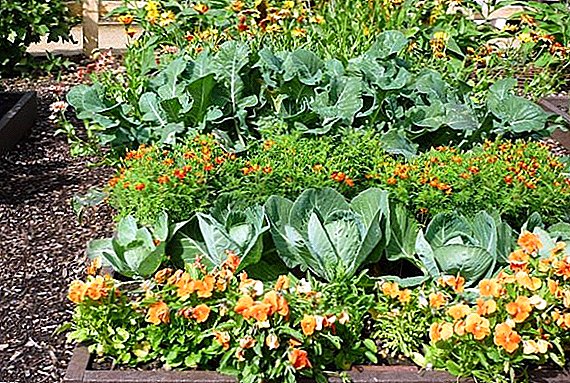 In order to efficiently use the area of a small plot of land, many gardeners successfully use this method of planting vegetation, such as mixed planting of vegetables in a garden.
In order to efficiently use the area of a small plot of land, many gardeners successfully use this method of planting vegetation, such as mixed planting of vegetables in a garden.
In this article we will tell you what it is, which schemes are practiced taking into account the peculiarities of plants and what are the advantages of the method.
What it is
Even under the conditions of a small suburban area, avid gardeners are trying to plant as many plants as possible. In such a situation, a combined planting of vegetable crops will be the best option - a method in which several vegetables or berries are grown in a limited area at once. A gardener needs to know about which plants can get along and which will conflict. It is important to plan in advance the order in which the vegetables will grow in order to get a good harvest.
Often mixed plantings consist of the main and accompanying cultures. So the latter protects the main, more valuable culture.
Important! Accompanying plants can be not only vegetables, but also flowers, herbs and a variety of green fertilizers.
Mixing rules
The compatibility of planting vegetables in the garden will be successful if you follow certain rules:
- Cultures of the same family cannot be near, because diseases and pests are common (except for pepper and eggplant).
- Greens and vegetables that ripen early (radish, lettuce, Chinese cabbage, onions, white mustard, early potatoes and cucumbers), combine with plants that ripen later (cucumbers, zucchini, pumpkin, eggplants, peppers, tomatoes, beets, cabbage).
- It is necessary to arrange the crops so that the shade of the tall ones does not fall on the low plants (the exception is seedlings, which, on the contrary, need shade). Watermelons and melons, eggplants, peppers, cucumbers, tomatoes, and corn are considered plants that love light. In shading prefer to grow bay leaf, lettuce, parsley, belt, Chinese cabbage and seedlings of any plants. Moderate light is loved: cabbage, carrots, radishes, turnips, radish, garlic, beans, onions.

Illustrative examples
To better understand how to organize mixed planting vegetables in the garden, you should see specific examples. In the spring, at a suitable temperature, after the beds have been prepared, you should plant early vegetables (for example, radishes or lettuce) with a solid carpet.
Did you know? Carrots are the second most popular vegetable after potatoes. Although the culture is ancient, familiar to us orange carrots appeared only in the XYII century.When the bunches of lettuce begin to grow and ripen radishes, it's time to thin them out and plant a follower in this place (for example, spinach). It is best to do it in a checkerboard pattern. Also next to the spinach, where previously there was radish, you can plant bush beans.
Did you know? Scientists have found that the smaller the eggplant, the less bitter it is.Please note that the beans must be planted so that its bushes have free access to collect the pods. When the spinach with radish will be finally harvested, in their place can be planted cucumbers and leaf or cabbage lettuce.
 After harvesting the beans, it makes sense to plant kohlrabi or broccoli.
After harvesting the beans, it makes sense to plant kohlrabi or broccoli.Mixed landings table
In order to always be able to check the correctness of the neighborhood of vegetables in the garden, there is a special table.
Important! Planting should be planned in advance and prepare the seedlings of cabbage and other crops for the desired period.
The advantages of the method
The main advantages of mixed plantings of vegetables are:
- rational use of garden area;
- the possibility of obtaining a harvest of fresh vegetables from early spring to late autumn;
- thanks to the combination and alternation of different crops that have different nutritional requirements, the soil is saturated with all the necessary nutrients;
- There are always main and accompanying plants in mixed plantings. Thanks to the accompanying plant for the main, a favorable environment for development is created, and the fruit taste becomes richer.
 From a combined planting of vegetable crops in the garden, a person keen on a vegetable garden receives only benefit. The main thing - the right neighborhood of different crops to get a useful and generous harvest.
From a combined planting of vegetable crops in the garden, a person keen on a vegetable garden receives only benefit. The main thing - the right neighborhood of different crops to get a useful and generous harvest.











